Alexandria - 'Most European' of Egyptian Cities
![]()
Our first morning in Alexandria, we arose, ate our typical Egyptian hotel breakfast, and rode the funky elevator to the ground floor. Emerging into the sunshine, we walked around the block and down to the Corniche. WOW! A vision of blue water, clear air, blue sky with a few puffy clouds, and the expansive cityscape extending along the Mediterranean to the east and the west met our gaze!
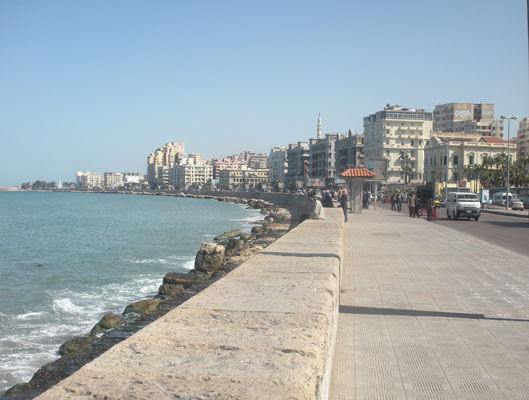
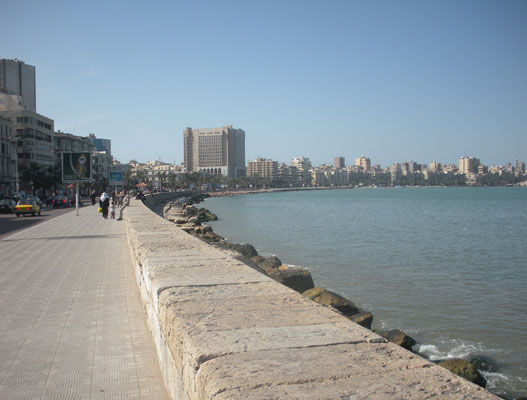
After absorbing this stunning panorama, we headed toward Delice's, the venerable old coffee and pastry house recommended by our Rough Guide, for our morning coffee. In our new surroundings, Cairo seemed a 'million' kilometers away!
A longer walk was in order on such a nice day so we headed back to the Corniche and strolled along the walkway, joining others enjoying the lovely morning, admiring the Alexandrian style buildiings. The picture on the right is our hotel.
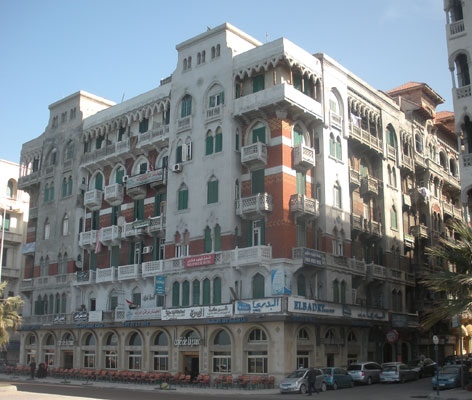
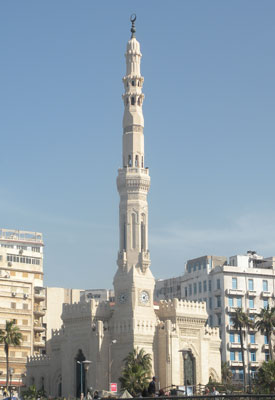
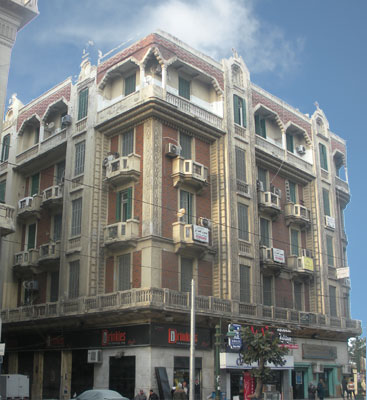
And so began our exploration of Alexandria, Egypt's second city, population over four million, The city's history began with its founding by Alexander the Great in 332 BC and continued through the Ptolemaic era during which the city grew large and became perhaps the greatest center of trade, learning, study and research in the world. The Royal Library of Alexandria was built in the third century BC and the librarians were directed by the Emperors to collect all of the world's knowledge! This was no small task but the royal mandate was well funded and quite successful.
Other famous early residents included Cleopatra, and the Romans - Julius Caesar, Mark Antony, Octavian, Hadrian and Caracalla. The Romans contributed a theatre complex that included lecture rooms and other areas for study to augment the Royal Library
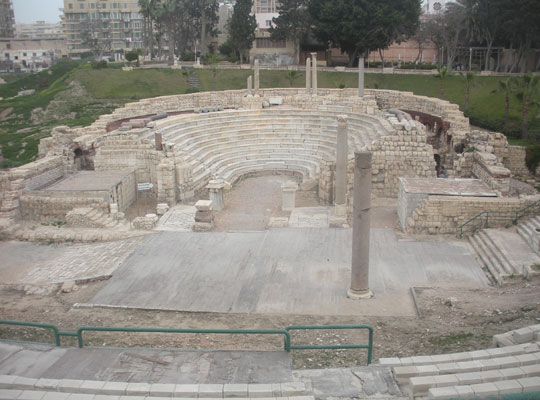
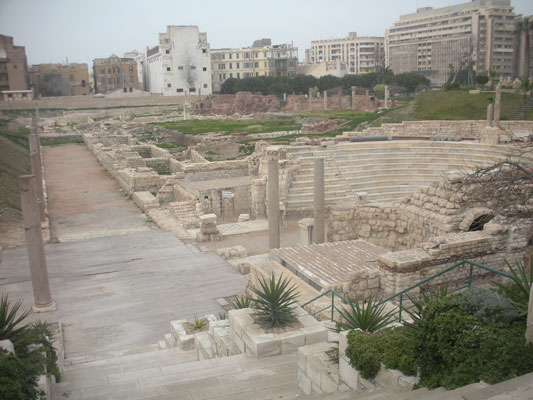
Byzantine rule followed the Romans bringing Christianity to the city in the 3rd and 4th centuries AD, much to the dismay and despair of the local pagans. An early cemetery with rock cut tombs and large niches for sarcophagi and other sites with catacombs enlighten scholars about early Christian funerary practices and testify to the unrest of that era.
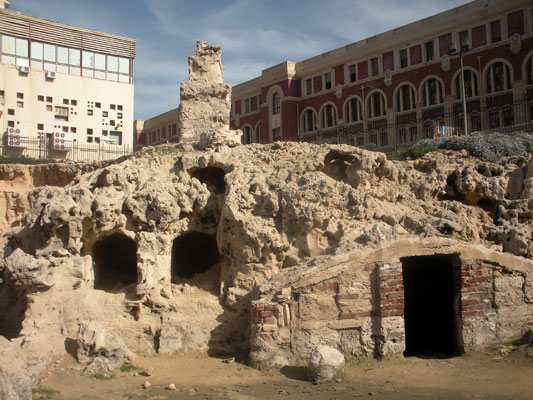
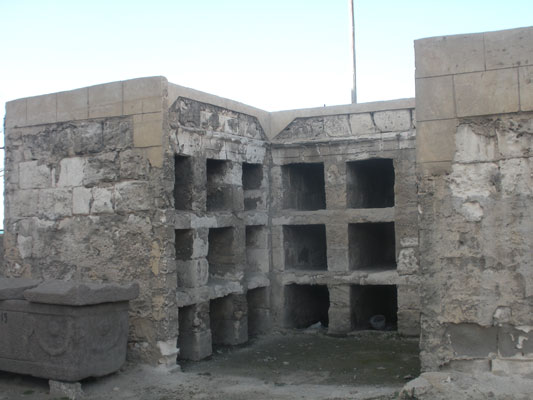
The city was conquered during the Muslim Conquest of Egypt in the seventh century AD and along with all of Egypt, was part of the Ottoman Empire until 1798 when Napoleon arrived with his troops and took the city. Then, in 1801, the British arrived and took the city from the French, but left the Ottoman leaders nominally in charge!
In the early and middle 1800s, under Mohammed Ali, the Ottoman Governor of Egypt, the city thrived as an international center and gained more famous buildings with influences of French, Italian, and Ottoman architectural design. As we explored, we viewed ...
St. Marks College's main building and the Memorial to Unknown Soldiers, ...
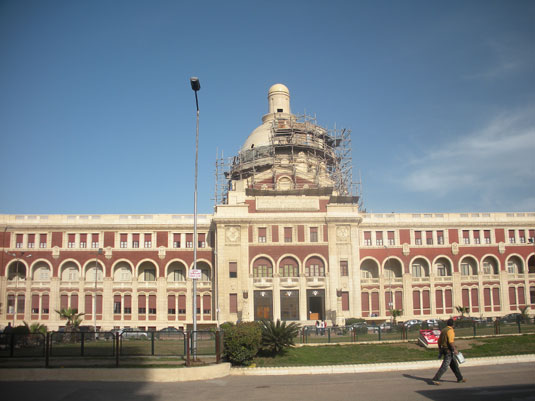
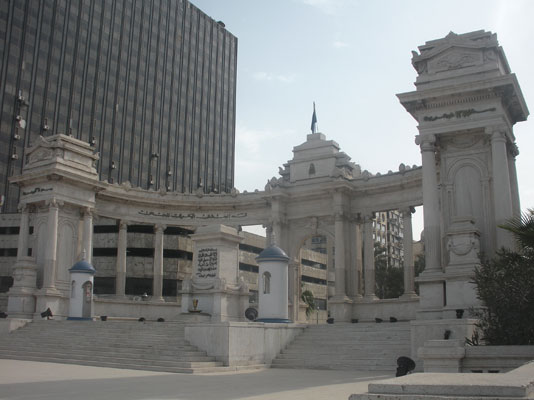
Fort Qaitbey, built to defend the harbor; and the classic railway station, ...
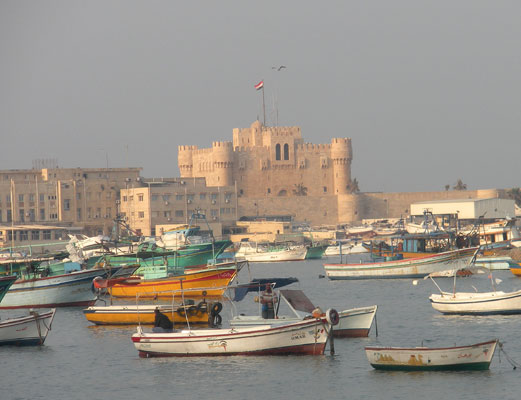
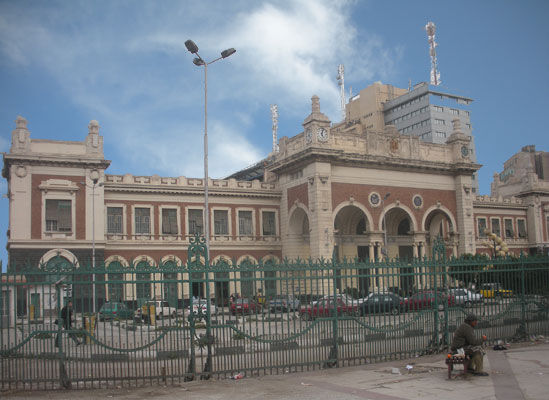
amazingly beautiful mosques, ...
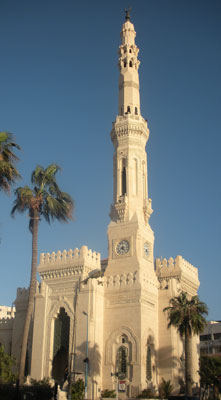
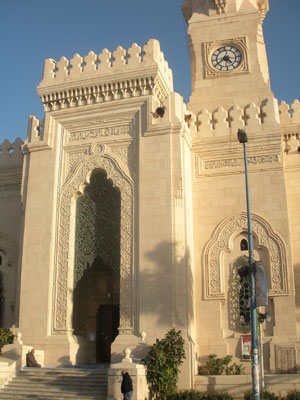
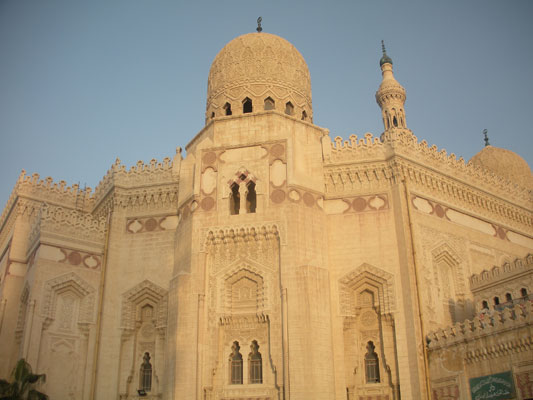
and the Teatro Mohammed Ali where classical performances take place, and the Synagogue.
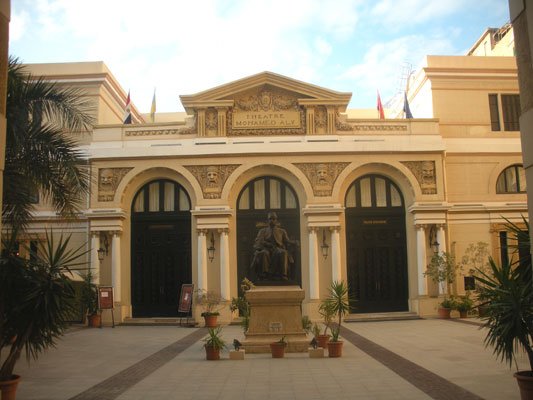
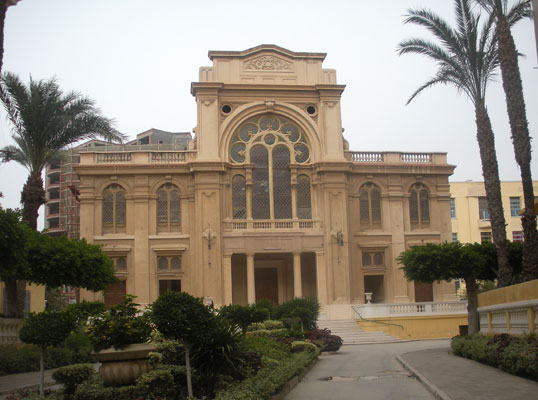
In 1860, trams began running and they continue to run today, the oldest system running in Africa and one of the oldest in the world. At first the trams were horse drawn, then steam driven and finally electrified in 1902. While the current system has a certain 'charm', we concluded that Alex would benefit from an upgrade of their trams with expanded routes and faster travel times.
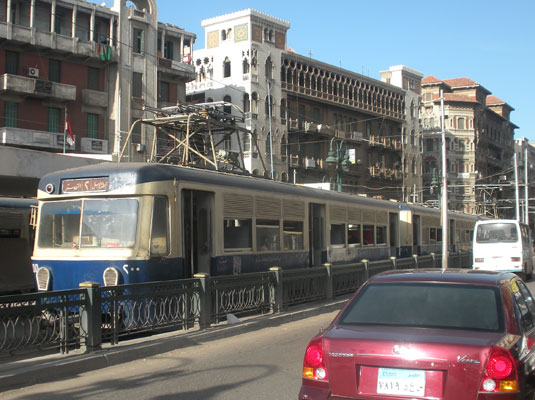
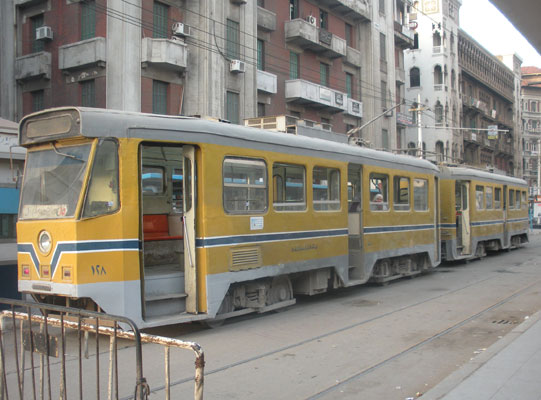
Riding these ancient trams provided us with wonderful city tours and opportunities to meet Alexandrians. As the only non-Egyptian riders we were noticed, of course, and the friendly folks often started conversations with "Where from? Welcome!"
Alexandria's centre is compact enough to explore on foot and thankfully there are fewer pedestrian hazards than in Cairo. So, by combining tram riding and walking, we explored this somewhat more European of Egypt's cities! Our explorations revealed...
Interesting and varied streetscapes, ....
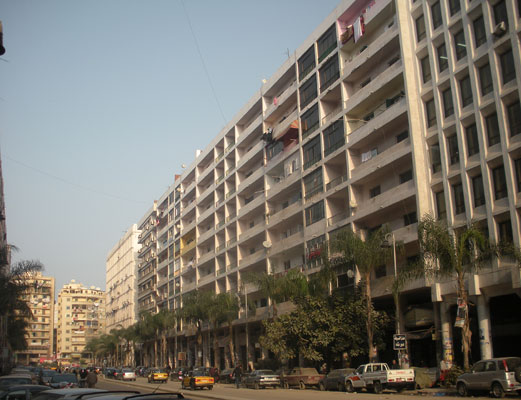
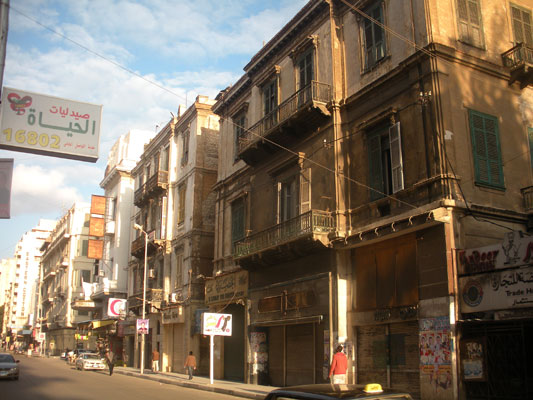
out of the usual places to buy food (a cart selling baked sweet potatoes and fish fresh from the sea), ...
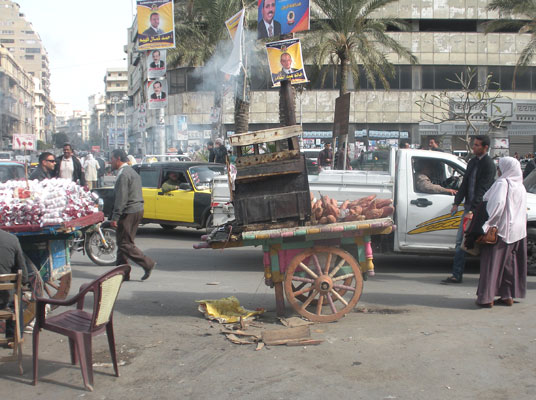
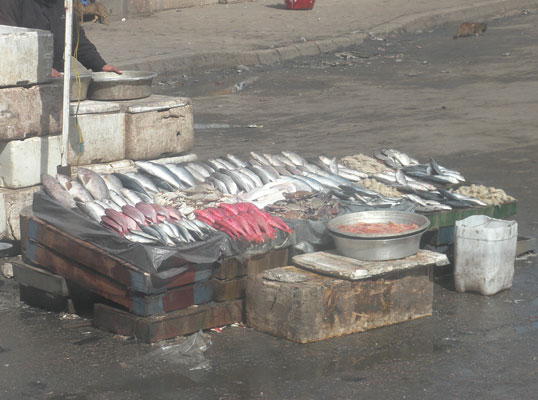
FJP Party Office and posters from the recent parliamentary elections, ...
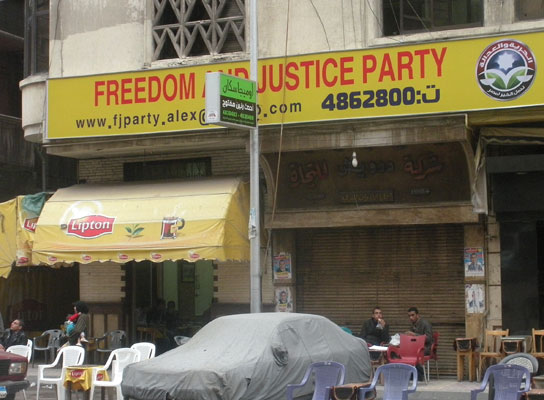
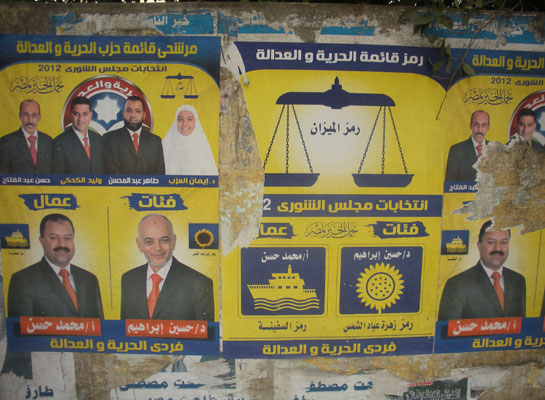
street scenes of current life and memorials to past times, ...
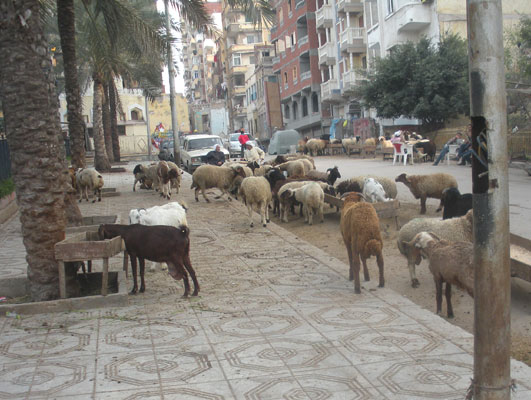
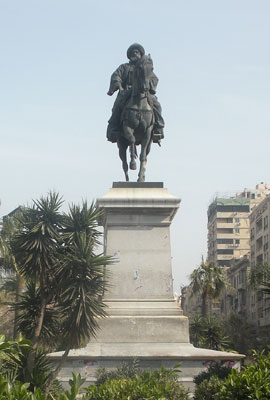
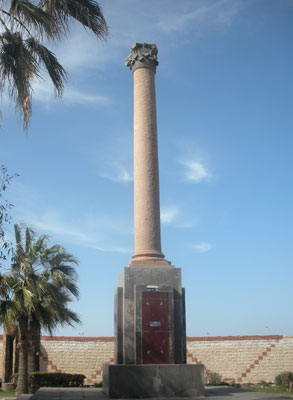
newstands with many newspapers (some in English) and advertising signs (not in English), ...
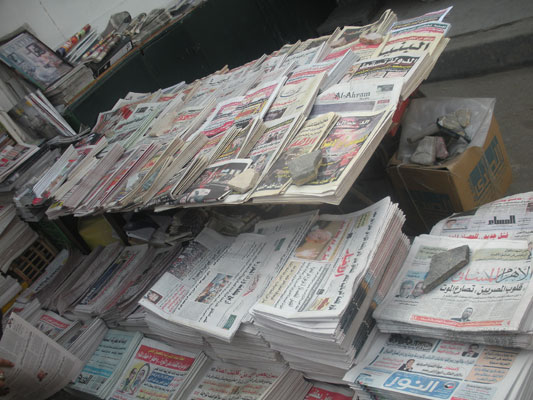
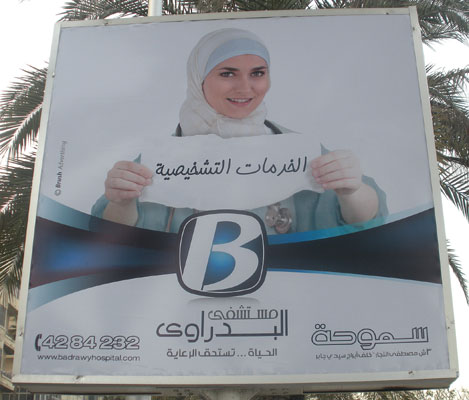
and a few public squares and parks.
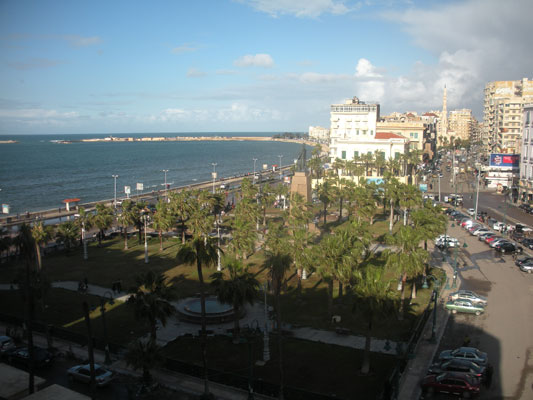
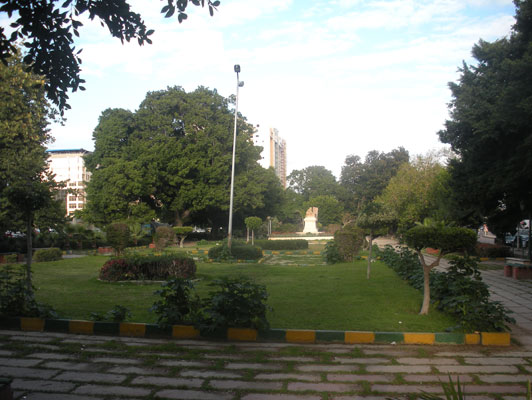
The Biblioteca Alexandrina was the highlight of our stay. Inaugurated in 2002 near the site of the ancient library the Biblioteca is dedicated to recapture the spirit of openness and scholarship of the original Bibliotheca Alexandrina. It is much more than a library. It contains museums with permanent and temporary exhibitions, a planetarium, a conference center and more. We enjoyed:
The slanted sculptured roof, designed with triangular window panels to capture natural light, ...
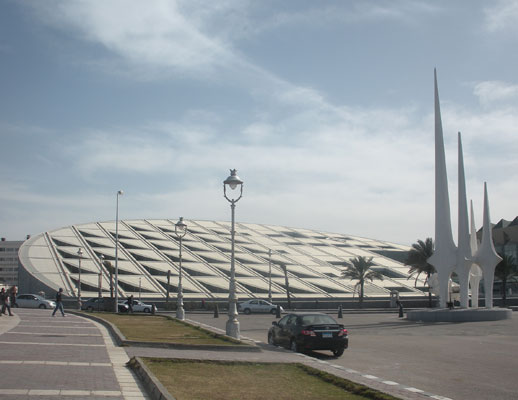
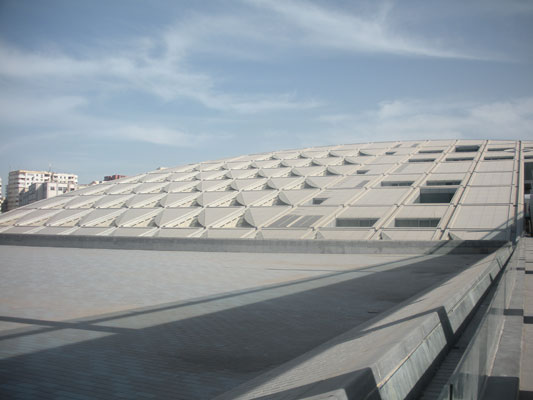
views of the round planetarium and rear wall inscribed with written characters of most of the world's languages,...
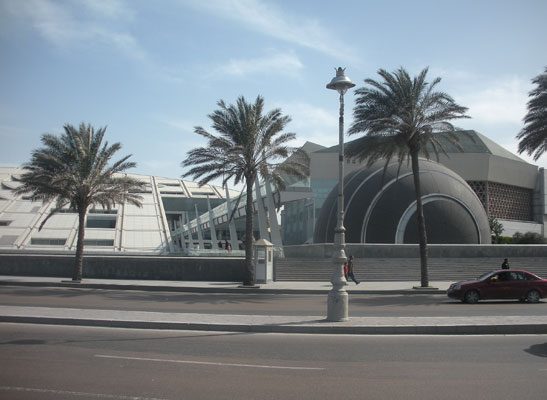
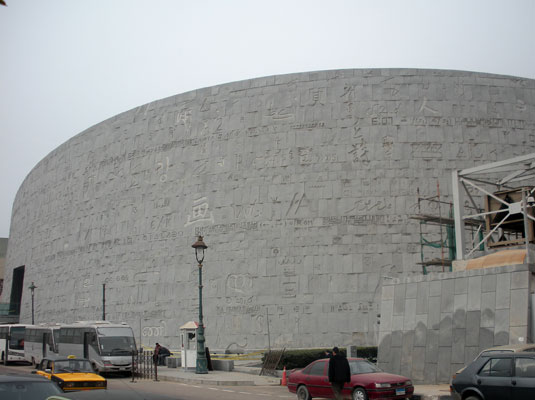
the large multi-level reading and computer access areas, ...
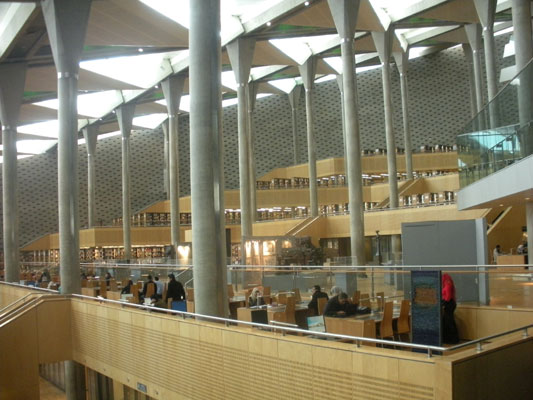
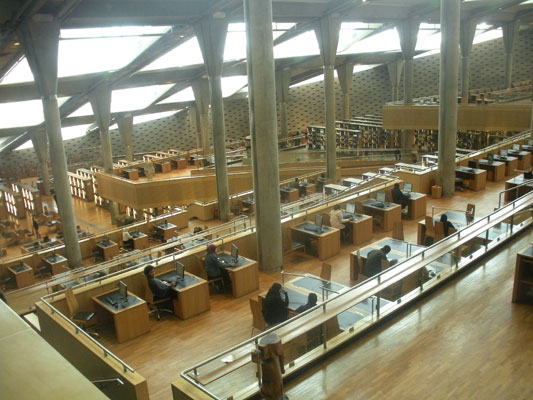
and exhibits of historical documents and works of art in the museums.
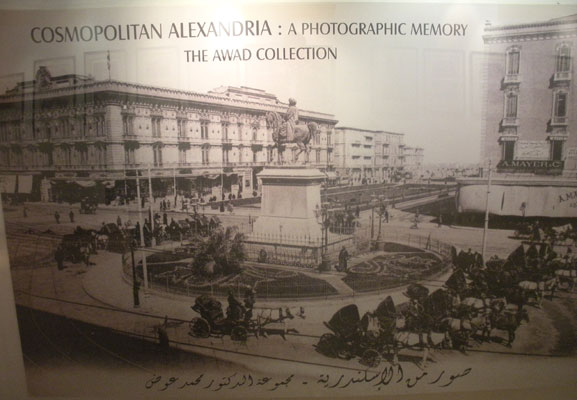
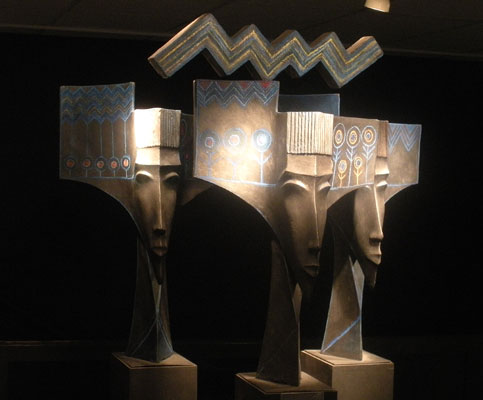
For those of you who are unable to visit the Biblioteca in person, the extensive digital library is available to all online.
Click here to visit (opens in a new window)
Farther east along the Corniche a small bay edged in perfect sand offered summer visitors to Alex a sheltered place to enjoy sun and a swim. In the 1920s bath houses and sun terraces were built around the bay. Rather than build the road around the bay, Stanley Bridge was built, a graceful structure with two towers at each end. Later traffic pressures caused the savvy traffic engineers to build more lanes around the bay. Today, the bathing beach is totally surrounded by speeding vehicles and pedestrians must bravely cross or find the single underpass.

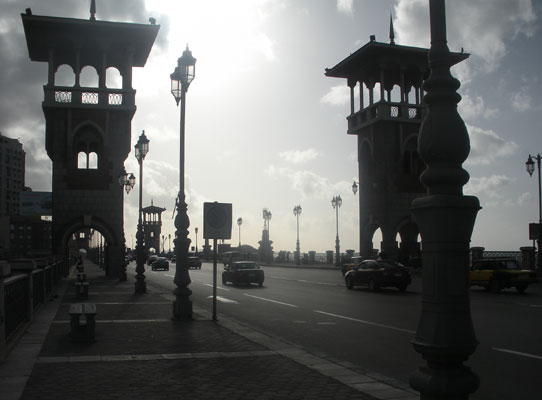
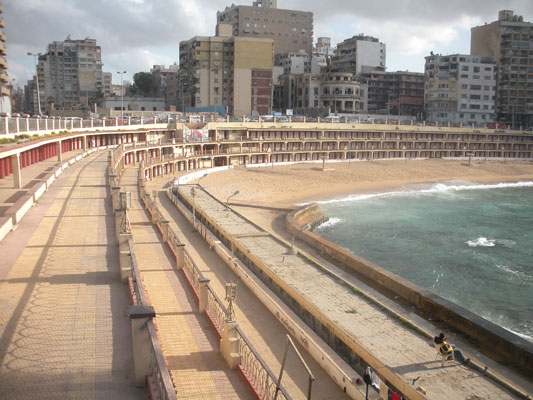
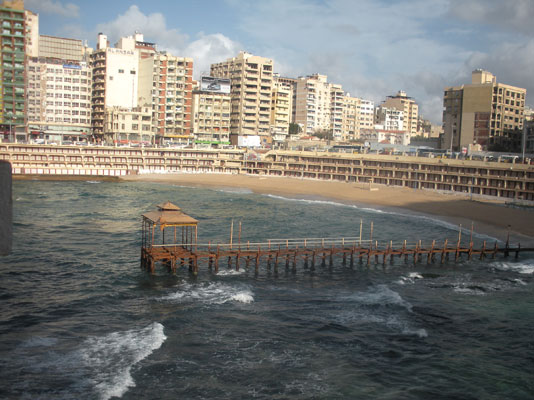
Over all the centuries since the founding of Alexandria, the many cultures have left artifacts and many have been discovered in the course of development. These found a home in the Alexandria National Museum, the lovely Italianate style Al-Saad Bassili Pasha Palace, whose three floors of exhibits nicely depict the major periods of the City's history.
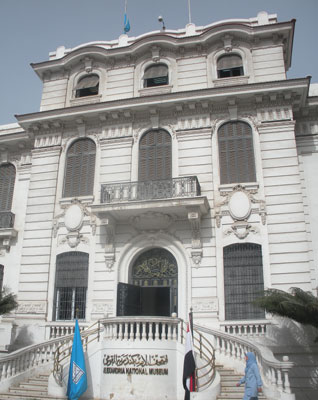
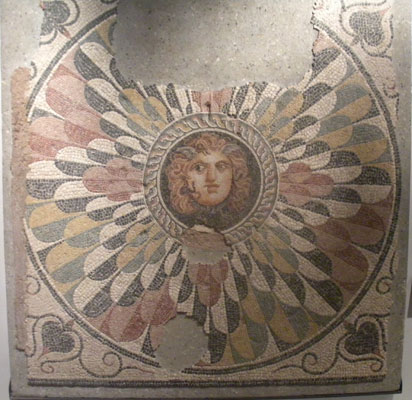
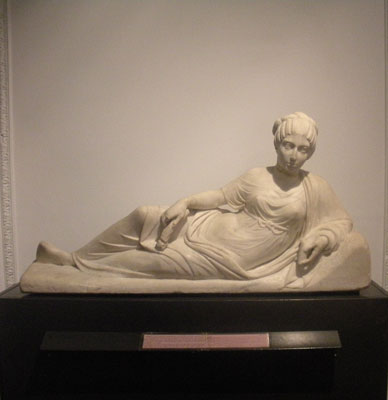
On our last evening in Alexandria and Egypt, we dined at the gracious Hotel Cecil. We enjoyed that often hard-to-get beverage, beer, with our meal as we pondered all that we had experienced, the people, the emotions, the sights and sounds, the our impressions, our feelings, the meanings we had attempted to discern. We concluded that we were leaving Egypt enriched but confounded, more aware but discomforted. We had learned so much but now we realized how much more we must learn to begin to understand this complex country and its people.
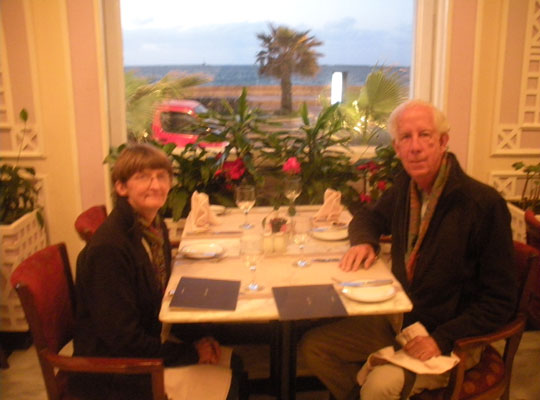
For more pictures of Alexandria, we invite you to view our Flickr album (opens in a new window)
Click here to return to the 'Spring 2012 - Our Journey through Egypt' page
![]()